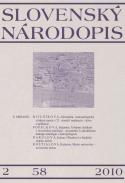Obsahové a funkčné zmeny centra mesta (Moderné a tradičné, alebo hľadanie novej tváre centra mesta)
Changes in content and function of the central areas of Slovak towns (Modern and traditional, or looking for new faces of towns centers)
Author(s): Jolana DarulováSubject(s): Anthropology
Published by: SAV - Slovenská akadémia vied - Ústav etnológie a sociálnej antropológie Slovenskej akadémie vied
Keywords: urban ethnology; city Banská Bystrica; urbanization; industrialization; deindustrialization; construction of a commercial-social centre
Summary/Abstract: Since 1889 the central areas of Slovak towns have undergone striking changes in content and function. One may rate positively the exclusion of traffic and the introduction of pedestrian zones where the commercial and social-cultural potential of the town is normally concentrated. This has created opportunities for meeting, casual trade and social contacts.Based on research into the changes of content and function in the centre of Banská Bystrica, one may say that the historic memory of the town has come into confrontation with the new contents, meanings and symbols immediately present in the town‘s central areas. The nodes of communication are gradually changing in the process of transformation, while at the same time modernisation fills with new contents above all those „vacated places“ which were distinctively marked by socialism in the recent past. Freedom of enterprise, free trade and the market mechanism have permitted new elements and processes to penetrate to the town spaces, visible in the ethnicity of shopkeepers and business executives as well as in the massive inrush of hypermarkets and shopping centres. A positive phenomenon is the fact that in the process of rebuilding the square and its adjoining streets the original historic character of the town centre has been preserved and courtyards have been opened up and made accessible to the public, with suitable building extensions for small shops and enterprises. However, the construction of a commercial-social centre situated in the vicinity of the pedestrian zone has disrupted many of the square‘s functions and much commercial and social activity has transferred itself to this new complex.
Journal: Slovenský národopis
- Issue Year: 58/2010
- Issue No: 2
- Page Range: 159 - 175
- Page Count: 17
- Language: Slovak

